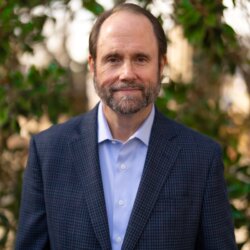
What are our options?
Richard Niebuhr’s Christ and Culture was published more than 60 years ago. It was my textbook in biblical ethics, and is still a classic in its field. Niebuhr sketches the five ways Christians can relate their faith to their society and culture. Let’s review them briefly.
One: Christ against culture. This model argues that we must reject the fallen world in every way, that we must have as little engagement with it as possible. We are to have nothing to do with the cultural issues of the day. However, the Incarnation seems to give the lie to this approach. If the physical world is inherently fallen, how could Jesus have remained sinless while inhabiting flesh?
Two: Christ of culture. This model attempts to integrate the world and the word of God, the culture and the Christian faith. It blurs the distinction between the two, and adopts the prevailing culture as the way to understand the faith. Whatever the culture adopts will be adopted by the faith as well. However, the Great Commission gives the lie to this approach. Why “go and make disciples of all nations” (Matthew 28:19) if the nations do not need to be evangelized and discipled?
Three: Christ above culture. This approach teaches that we live in two worlds, the spiritual and the secular, and we must give each its due. The one is not the other. The great problem with this approach is the sinfulness of humanity. This model does not do enough to transform the culture it seeks to help. It lives in Sunday and Monday without seeking to bring Sunday to Monday.
Four: Christ and culture in paradox. This approach rejects the third by arguing that culture is so inherently sinful as to be beyond saving. Yet it contradicts the first (Christ against culture) by arguing that we must try. We must preach grace to law, the gospel to the lost. We respond to the issues of our culture by preaching the gospel of salvation, for only when souls change can the world change. The problem with this approach is that it does not speak to issues the Bible itself addresses, such as the treatment of the poor. It is not a holistic worldview as are the Scriptures.
Five: Christ transforming culture. This model seeks to bring the biblical worldview to bear on every dimension of society for the purpose of redeeming the culture for the Kingdom. Unlike the first model, it does not ignore the culture; unlike the second, it does not adopt it; unlike the third, it does not separate the two realms; unlike the fourth, it seeks the salvation of souls but also the transformation of society. It would seek to apply biblical truth to cultural issues for the sake of advancing the Kingdom of God on earth.
One challenge this model faces is the difficulty of keeping salvation issues primary. It is easier to deal with social issues as ends rather than as means to the end of eternal souls and significance.











